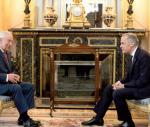You are here
7.1% of Jordanian women are widows – HPC
By JT - Jun 24,2024 - Last updated at Jun 24,2024
AMMAN — The United Nations and countries around the world commemorate International Widows’ Day on 23 June each year to amplify the voices of widows, highlight their experiences and mobilise the support they need.
The Higher Population Council (HPC) reported that 7.1 per cent of Jordanian women are widows, compared to only 0.05 per cent of Jordanian men.
The council urged governments to take action to fulfil their obligations to protect the rights of widows as set out in international law, including the Convention on the Elimination of All Forms of Discrimination against Women.
In a statement cited by Al Mamlaka TV, the HPC highlighted the high percentage of widows among Jordanian women and stressed that discussions on widowhood should not be limited to the elderly, as widowhood can occur at any age.
Highlighting a significant disparity in marital status between older men and women aged 60 and over, the council said that according to data from the 2015 General Census of Population and Housing, the widowhood rate among elderly men is much lower (about 6 per cent) compared to elderly women (about 42 per cent).
These statistics are corroborated by 2022 data from the Civil Status and Passports Department, which shows that 42.8 per cent of Jordanian women aged 60 and above are widows, compared to only 0.4 per cent of men in the same age group.
The council identified four main reasons for the significant gender gap in widowhood rates, including differences in life expectancy, which indicates that women live longer than men on average (75.1 years for women compared with 72.3 years for men).
The second reason is age gap at marriage, as social norms often result in husbands being older than their wives, leading to wives outliving their husbands.
The council said that widows, especially those with children, have lower remarriage rates than widowers due to cultural stigma.
Citing Department of Statistics (DoS) figures, the HPC said that reports on marriages between 2019-2022 show that despite the increase in the number of widows, there are significantly fewer marriages involving women aged above 50 compared to men in the same age group.
During these years, there were 3,042 marriages involving women aged 50 and over, compared to 12,999 for men, according to official data.
The figures also showed that 92 per cent of elderly men are currently married, compared with 54 per cent of elderly women. In contrast, some 43 per cent of older women are widowed or divorced, compared with only 6 per cent of men.
In terms of economic participation rates, widowed Jordanian women have lower participation rates compared to the general female population. In 2022, the economic participation rate for widows was only 2 per cent, compared to 13.9 per cent for all Jordanian women. Widows who were heads of household had a participation rate of 1.9 per cent.
Among employed Jordanian widows aged 15 and above, the employment rate was 2.2 per cent, compared with 31.7 per cent for those heading households, which highlights the importance of strengthening social protection programmes for this group to ensure a decent life for them and their families.
Related Articles
AMMAN — A detailed analysis conducted by the Higher Population Council (HPC) in partnership with the United Nations Population Fund indicate
Older adults who lose a spouse may be more vulnerable to cognitive decline in subsequent years and require extra support and monitoring, res
AMMAN — The rise in divorce cases in Jordan is a natural consequence of the rising number of marriage rates and new families each year, the

















